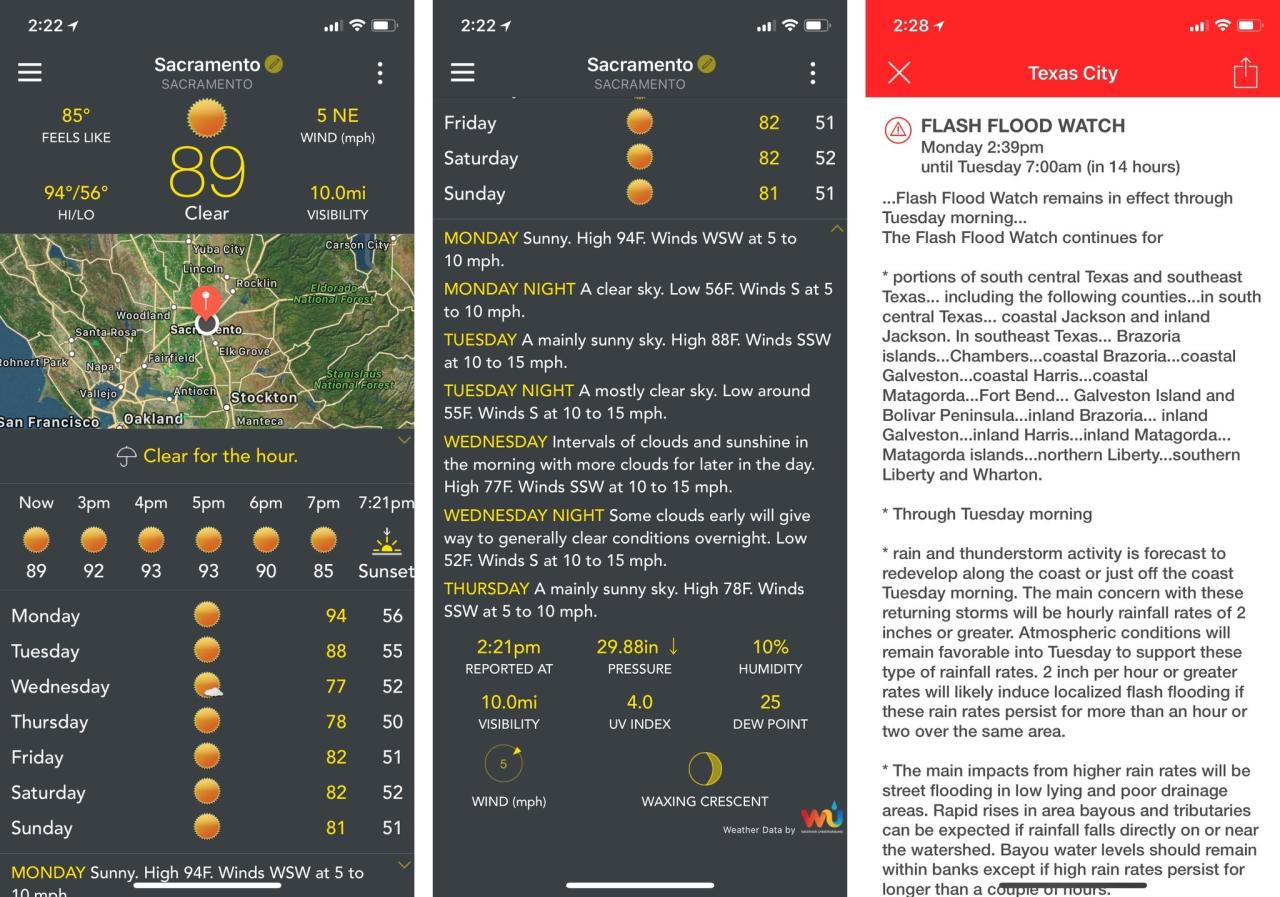Best Weather App for iPhone Your Ultimate Guide
Sick of weather apps that just don’t cut it? Rain or shine, you need a weather app that’s accurate, easy to use, and packed with useful features. From super-detailed forecasts to personalized alerts, the right app can totally transform your daily routine. This deep dive explores the best weather apps for iPhones, examining everything from interface design to data accuracy. Get ready to uncover the ultimate weather companion for your iPhone.
We’ll explore the essential features, delve into user experiences, and compare the pros and cons of popular apps. You’ll discover the critical factors to consider when choosing a weather app, from accuracy to reliability, and learn how to navigate the complex world of weather data presentation.
The Best Weather App for iPhone: A Comprehensive Guide
Weather apps have become indispensable tools for navigating daily life, from planning outdoor activities to ensuring safety during inclement weather. This comprehensive guide explores the world of iPhone weather apps, delving into their features, user experiences, and technical aspects to help you choose the perfect app for your needs.
Introduction to Weather Apps

iPhone weather apps offer a wide range of functionalities, from displaying current conditions to providing detailed forecasts for upcoming days. Common features include current temperature, precipitation predictions, wind speed and direction, humidity, sunrise and sunset times, and more. The evolution of these apps has been remarkable, transitioning from simple text-based displays to visually rich interfaces incorporating interactive maps, radar imagery, and detailed historical data.
Accurate weather forecasts are crucial for a multitude of activities, enabling users to make informed decisions about travel, outdoor events, and personal safety. Precise information empowers users to prepare for potential weather changes, minimizing risks and maximizing enjoyment.
| Interface Type | Description |
|---|---|
| Minimalist | Focuses on essential information, using clean layouts and simple graphics. |
| Detailed | Provides comprehensive information with multiple data points, charts, and interactive elements. |
| Interactive | Allows users to customize views, zoom into specific locations, and explore weather data in depth. |
Key Features to Consider
Users prioritize various features when selecting a weather app. Accuracy, reliability, and timely updates are paramount. The presentation of weather data, including the use of maps, graphs, and radar, significantly impacts the user experience.
- Accuracy: A crucial aspect ensuring that the information displayed is reliable and consistent with actual conditions.
- Reliability: The consistency of the app in providing accurate predictions over time, even for diverse geographical locations.
- Timely Updates: The frequency of updates to ensure that users are always receiving the most current data.
User Experience and Interface
Intuitive design principles are essential for a positive user experience. A well-designed interface should be easy to navigate, with clear and concise information presentation. Color schemes, icons, and overall visual elements significantly affect user perception and interaction with the app.
- Intuitive Navigation: The ease of finding specific information within the app without confusion.
- Visual Clarity: The use of clear fonts, colors, and graphics to present weather data effectively.
- Customizability: The ability for users to personalize the display of information to their preferences.
| Layout Design | Description |
|---|---|
| Compact | Displays a condensed view of key weather data. |
| Detailed | Offers a comprehensive view of weather information with various elements. |
| Interactive Map | Uses a map interface to show weather conditions in different locations. |
Data Accuracy and Reliability
The accuracy of weather predictions hinges on the quality and source of the data used by the app. Validation and verification processes are critical to ensuring the reliability of forecasts. Reliable weather data enables users to make informed decisions, particularly in situations requiring rapid response to weather changes.
- Data Sources: Understanding the various sources of weather data used by different apps.
- Validation Processes: Explaining the steps taken to ensure the accuracy and reliability of weather predictions.
- Impact on Users: Illustrating how accurate weather data can positively impact various aspects of users’ lives.

